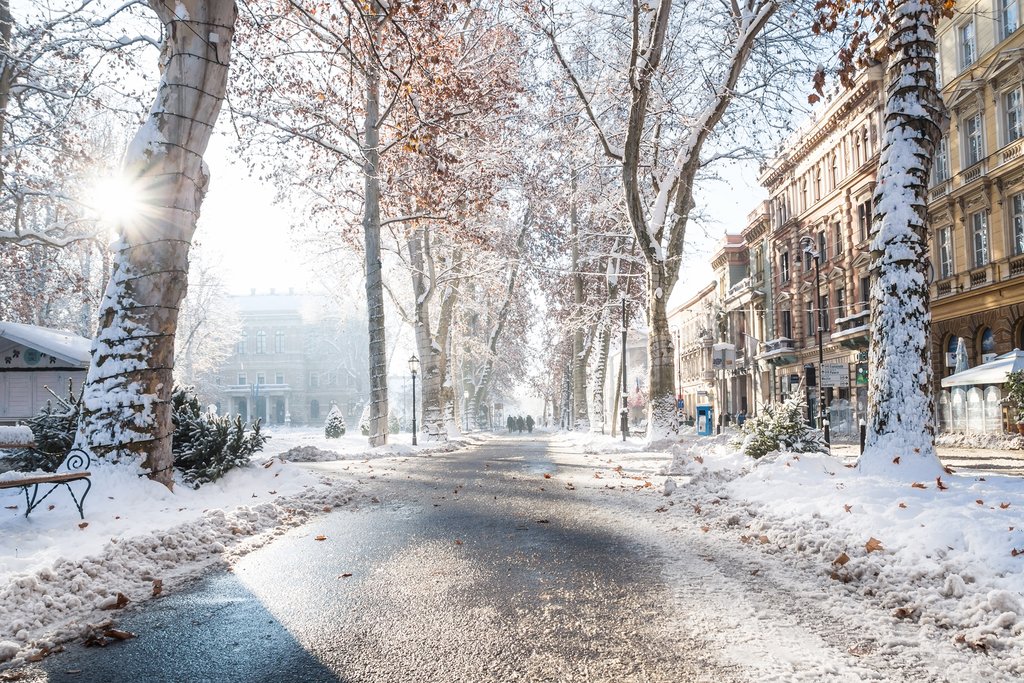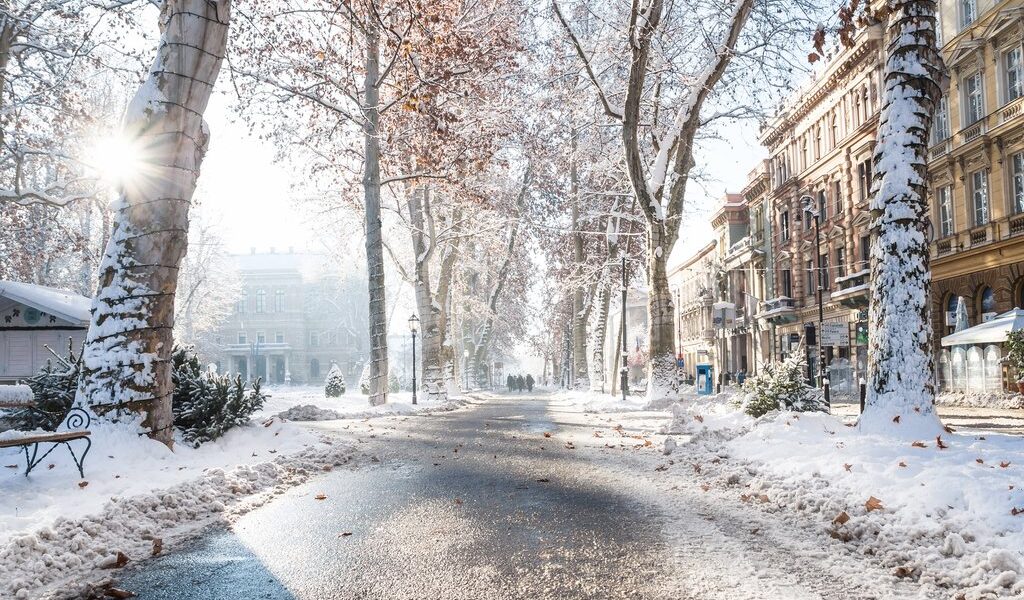
Croatia’s first month of the year is also its coldest. But with the chilly weather comes fun snow activities, the start of carnival season, fewer crowds, and lower costs than other times of the year. This is also one of the best winter months for capturing the quiet majesty of Plitvice’s frozen lakes and waterfalls. Find out what to do and where to go with this January guide.
January in Croatia: A Comprehensive Travel Guide
## Weather in Croatia in January
January in Croatia marks the heart of winter, making it the country’s coldest month. Travelers should anticipate temperatures frequently dipping to freezing point or even below, with the average temperature range hovering between 0°C (32°F) and 8°C (47°F). This chill permeates much of the country, demanding appropriate winter attire.
Along the breathtaking Adriatic coast, the weather offers a slight reprieve, registering a few degrees warmer than the interior regions of Croatia. However, those venturing into the southern coastal regions should be prepared for wet conditions. These areas typically experience approximately five to six inches of rainfall throughout the month of January. Adding to the coastal weather’s complexity is the formidable *bura*, a strong northeasterly wind. The *bura* is a force to be reckoned with; when it unleashes its power, locals tend to stay indoors, ferry services are often canceled, and even bridges can be closed as a safety precaution. Packing a reliable waterproof jacket is highly recommended, as is layering clothing to adapt to the fluctuating temperatures and potential wind chill.
Venturing inland, especially towards the north and in the vicinity of **Zagreb**, requires even more diligent preparation for the winter elements. Travelers should ensure they have proper winter apparel, including a heavy coat for warmth, a hat to prevent heat loss, a scarf to protect the neck, and gloves to keep hands warm. Temperatures in these inland areas often hover around the freezing mark, with typical highs reaching only 3°C (37°F) and lows plunging to a frosty -3°C (27°F). Snowfall is common throughout the winter months in these regions, which can lead to disruptions in travel, particularly in highland areas. It’s essential to check weather forecasts and road conditions before embarking on journeys in the Croatian highlands during January.
## Crowds and Costs in Croatia in January
The bustling Advent and Christmas crowds have largely dissipated by January, allowing Croatia to revert to its authentic off-season charm. The ambiance shifts to one of quiet serenity, and travelers can take advantage of budget-friendly accommodation prices. The stunning Adriatic coast experiences a period of tranquility; hotels, if not completely closed for the season, often significantly reduce their rates to attract visitors. Ferry routes are typically reduced, and travel times are often extended, weather permitting. However, it’s important to be aware that inclement weather can lead to ferry cancellations, further emphasizing the need for flexibility in travel plans.
In contrast to the coastal quiet, ski season is in full swing in Croatia during January. Although the country might not be the first destination that comes to mind for European skiing, Croatian resorts offer a unique experience. Compared to more popular European ski destinations, Croatian resorts remain relatively uncrowded and generally less costly, making them an attractive option for budget-conscious ski enthusiasts.
## Where to Go in Croatia in January
Croatia in January presents a diverse array of options to cater to various travel preferences. For those seeking an escape from the bitter cold, the alluring Adriatic coast beckons. Consider beginning your coastal journey in **Dubrovnik**, which typically remains adorned with festive decorations as part of its Winter Festival (often extending until March). Here, you can revel in the relatively crowd-free atmosphere and appreciate iconic attractions like the ancient city walls and breathtaking sea views without the usual throngs of tourists. Other coastal cities with captivating historical centers worth exploring in peaceful solitude include **Split** and **Zadar**. Each offers a unique glimpse into Croatia’s rich history and culture.
Alternatively, Croatia’s picturesque interior and stunning national parks, such as **Plitvice Lakes National Park**, undergo a breathtaking seasonal transformation during winter. The landscape takes on a magical, fairy-tale-like quality, inviting visitors to bundle up warmly and explore the designated routes that are maintained throughout the winter months. **Zagreb**, the vibrant capital city of Croatia, is likely to be blanketed in snow, creating a charming winter wonderland. This makes it an ideal time to visit the nearby ski resort of **Sljeme**, conveniently located just outside the city, for some skiing or snowboarding.
## What to Do in Croatia in January
While Croatia may not be internationally renowned for skiing to the same extent as some of its European neighbors, the country offers surprisingly favorable conditions, milder weather compared to some alpine regions, fewer crowds, and reasonably priced ski passes. For a unique skiing experience, consider visiting the slopes of **Platak** in **Primorje-Gorski Kotar County**. Situated just six miles from the sea and north of Rijeka, Platak offers the unusual opportunity to ski down one of its seven slopes while enjoying a breathtaking panoramic view of the Adriatic Sea.
Another fantastic option is a trip to the **Sljeme** ski resort, easily accessible from **Zagreb**. **Sljeme** offers various winter activities, including skiing, snowboarding, sledding, and even invigorating winter hikes. In addition, January is the month when **Sljeme** hosts the Snow Queen Trophy (Snježna kraljica), a prestigious world-class skiing competition that attracts international athletes and spectators alike.
For those with a penchant for lively celebrations, a trip to **Rijeka** in mid-January is a must. It marks the beginning of Croatia’s largest carnival. Witness the traditional handing over of the city key to the carnival “maestro,” a symbolic gesture that marks the official start of the festivities. Watch as **Rijeka’s** main street, the **Korzo**, transforms into a vibrant and energetic mass party. The carnival features a diverse range of events, including colorful pageants, energetic street dances, captivating concerts, and elaborate masquerade balls. DJs spin tunes at various bars and clubs throughout the city, adding to the festive atmosphere.
Photographers and nature enthusiasts will find themselves captivated by **Plitvice Lakes National Park** in January. The heavy snow and delicate ice formations transform the already stunning landscape into a truly magical spectacle. Foodies will also rejoice, as January offers a significantly better chance of securing a reservation at some of Croatia’s top restaurants due to the lower tourist volume.
## Events in Croatia in January
* **New Year’s Day**, **nationwide**: As a national bank holiday, expect widespread closures of shops, businesses, and services throughout the country. Transportation schedules will typically operate on a holiday schedule, with reduced frequency or potential cancellations.
* **Night of the Museums**, **nationwide**: On the last Friday of January, galleries and museums across Croatia participate in the Night of the Museums event. They open their doors to the public free of charge from 6 pm to 1 am, offering a unique opportunity to explore cultural treasures after dark. This event often includes special programs, hands-on activities, interactive workshops, and captivating exhibitions designed to engage visitors of all ages.
(Word Count: 856)
B-623

